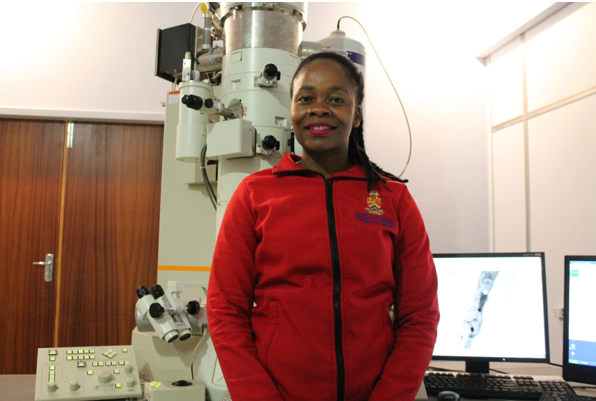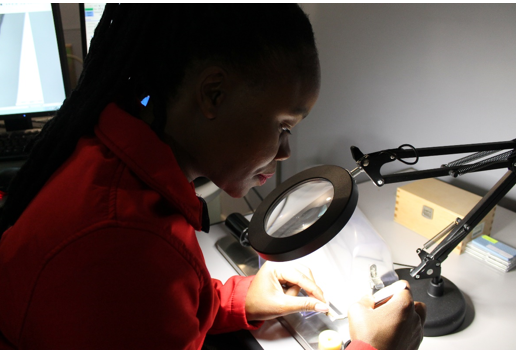
Microscopy and microanalysis is a specialised field where miniscule objects or particles are analysed and observed. These techniques are crucial in fields such as biology, engineering, material sciences, forensic science and nanotechnology. The representation of women in the fields of microscopy and microanalysis in South Africa is growing and organisations like the Microscopy Society of Southern Africa (MSSA) holds annual conferences and offers student grants, which have seen increasing participation from women, especially postgraduate students.
Charity Maepa is a prominent name in the microscopy field in South Africa and currently holds the position of the application and training manager at the University of Pretoria’s laboratory for microscopy and microanalysis. She is also a co-founder of the African Inclusive Microscopy Network that provides training on microscopy techniques and skills for postgraduate students as well as for researchers in Southern Africa and across the continent.
Ms Maepa’s love for Science, Technology, Engineering and Mathematics (STEM) subjects started at a young age. She consistently excelled in mathematics and science. “Initially, I considered a medical career, largely because my mother encouraged it,” she began. “However, in Grade 12, after shadowing our family doctor for a day, I realised that it was not the path for me.” She admits that seeing stitches made the experience unappealing. It was not long, though that her passion for chemistry blossomed and she began forging her path.
While in high school, she attended Maths and Science Saturday school at Wits University and constantly sough to improve her skills and studies. “I was fortunate to have STEM mentors throughout my life. Whether it was my uncle, neighbour or classmates who excelled in Maths and Science, I always surrounded myself with people who could help me improve. I worked hard and sought out study companion. These experiences and mentors guided me toward a career in STEM.”

That passion and excitement for science is still evident in Charity today as she notes her fortune in realising that passion for microscopes at a young age. During her internship at the Council for Scientific and Industrial Research (CSIR) she continued to seek opportunities for knowledge. She volunteered to do microscopy work for her colleagues, which granted her continued access to the laboratory. “I was so persistent that my supervisor eventually trained me, seeing how much it benefitted the group because I took on more projects,” she said. This determination worked in her favour to the extent that while she was pursuing her master’s degree, she was offered an employment contract by CSIR. “That moment is something I appreciate to this day. At the time, even the title ‘microscopist’ wasn’t clear to me; there were so few of these instruments in the country that I didn’t even know it could be a career. When the company hired Dr James Wesley Smith as the facility manager, who was an expert in the field, I finally felt validated in my career choice, seeing someone else who shared my passion.’’
The microscopist added that being in the academic environment, the next logical step often seems to be becoming a professor but she, on the other hand, is drawn to techniques and instruments, “I started with various thermal, polymer and synthetic techniques because I initially did not have access to the microscopes, but once I did, I never let go. I love seeing and interacting with the Nano world. Microscopy is art to me.” She added.

